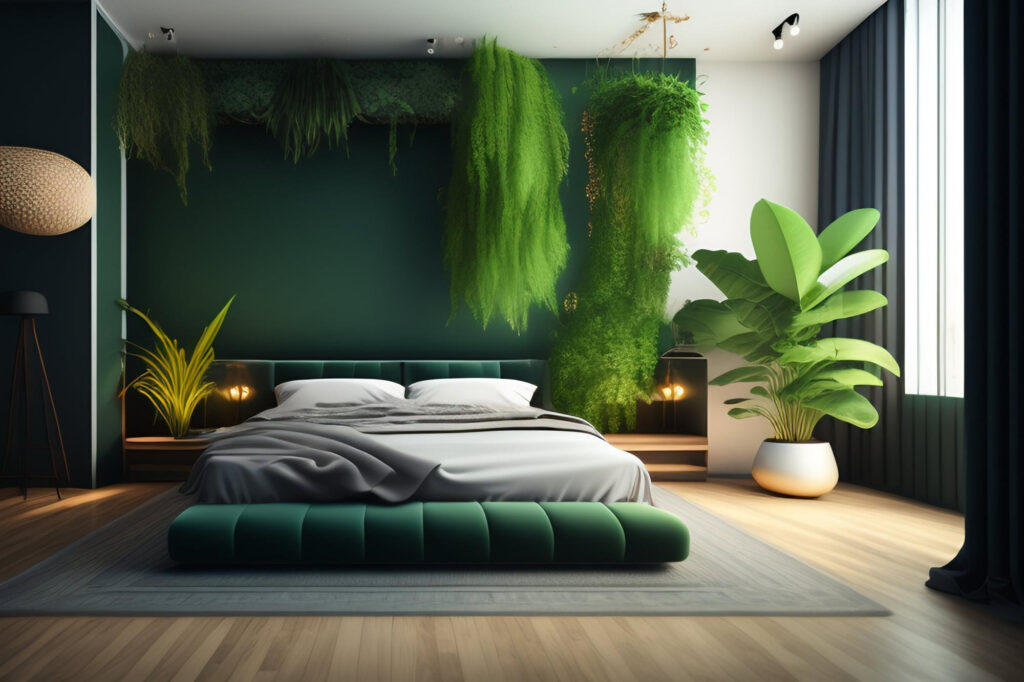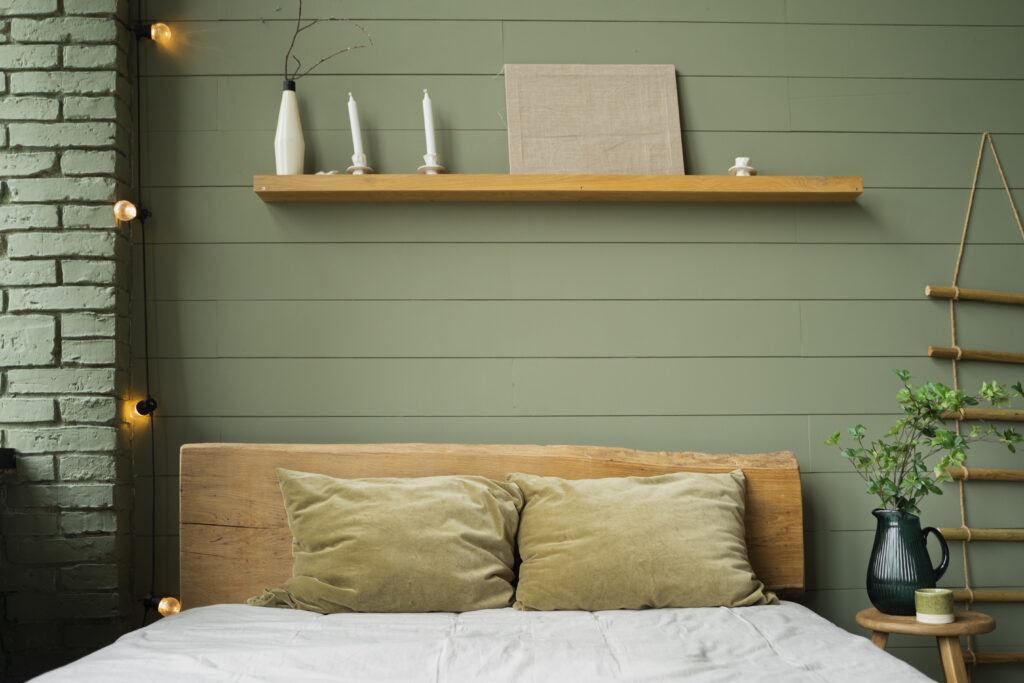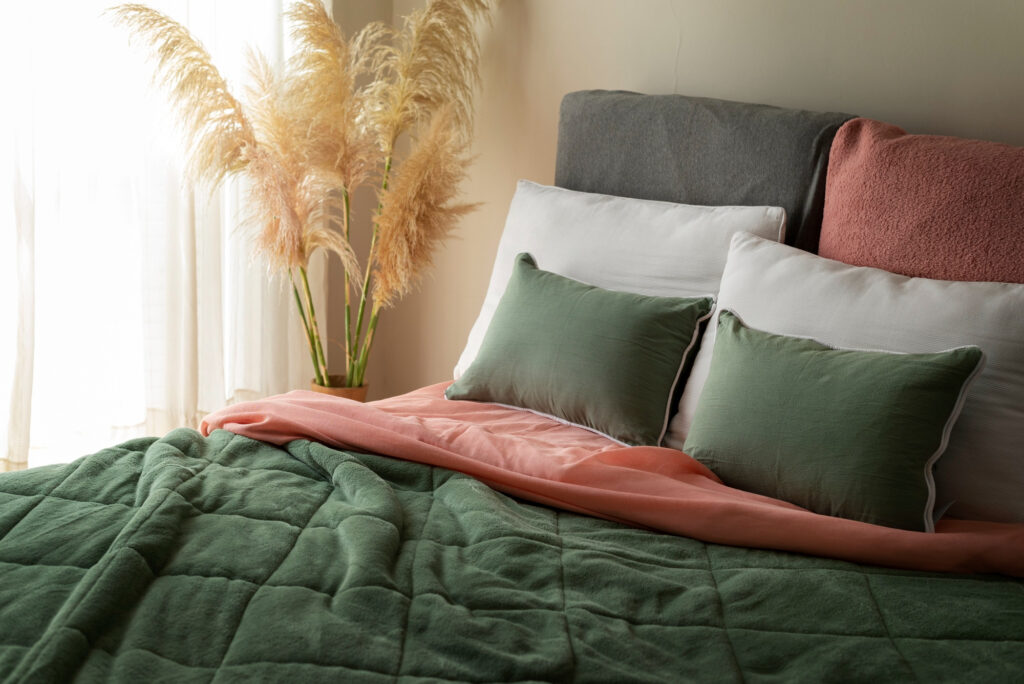Introduction
In today’s eco-conscious world, making sustainable choices in every aspect of our lives is becoming increasingly important. This extends to our choice of furniture, including the bed we sleep on. If you’re looking to reduce your carbon footprint and create a more environmentally friendly bedroom, a green bed may be the perfect addition. In this comprehensive guide, we’ll explore the world of green beds, their benefits, materials, and how to choose the best one for your needs.
What is a Green Bed?

A green bed, often referred to as an eco-friendly or sustainable bed, is a type of bedding furniture designed with a strong emphasis on environmental responsibility and sustainability. Unlike traditional beds, green beds are crafted with the goal of reducing their ecological footprint and promoting eco-conscious living.
Key Features of Green Beds:
1. Environmental Responsibility:
Green beds are manufactured using materials and processes that prioritize the well-being of the environment. This includes the use of sustainable and renewable resources, such as organic cotton, natural latex, and sustainable wood. By choosing these materials, green bed manufacturers contribute to reducing deforestation and minimizing their carbon footprint.
2. Chemical-Free:
One of the distinctive characteristics of green beds is their commitment to being chemical-free. Unlike conventional mattresses that may contain harmful chemicals and toxins, green beds are crafted using non-toxic, eco-friendly materials. This not only ensures a healthier sleeping environment but also promotes better indoor air quality.
3. Durability:
Green beds are known for their durability and longevity. They are built to withstand wear and tear, reducing the need for frequent replacements. This durability not only saves you money in the long run but also reduces the amount of waste generated by discarded mattresses.
4. Energy Efficiency:
Some green bed manufacturers go the extra mile by implementing energy-efficient production processes. This further reduces their environmental impact by conserving energy resources during manufacturing.
Why Choose a Green Bed?
Green beds are a wise choice for individuals who are passionate about living sustainably. By investing in a green bed, you are making a conscious effort to:
- Protect the Environment: Supporting the use of sustainable materials and practices helps protect natural ecosystems and reduce the negative impact of furniture production on the planet.
- Enhance Indoor Air Quality: The absence of harmful chemicals in green beds means you can enjoy better indoor air quality in your bedroom, promoting overall health and well-being.
- Contribute to a Circular Economy: Green beds often incorporate recycled or recyclable materials, contributing to the concept of a circular economy where resources are reused and repurposed.
Types of Green Bed Materials

When it comes to choosing a green bed, understanding the different materials used is crucial in making an informed decision. These eco-conscious materials not only promote sustainability but also offer various benefits for a healthier and more environmentally responsible sleep environment. Here’s a closer look at the types of green bed materials you can consider:
1. Organic Cotton
Organic cotton is a popular choice for green bed linens and covers. It is cultivated without the use of synthetic pesticides or fertilizers, making it a safe and sustainable option for bedding. Organic cotton is not only gentle on the environment but also soft and breathable, providing you with a comfortable night’s sleep.
2. Natural Latex
Natural latex is derived from rubber trees and is a biodegradable material commonly used in eco-friendly mattresses. It offers several advantages, including being hypoallergenic, resistant to dust mites, and durable. Latex mattresses are known for their responsiveness and ability to conform to your body’s shape, ensuring a supportive and restful sleep experience.
3. Sustainable Wood
For those looking to incorporate sustainability into the bed frame or headboard, sustainable wood options like bamboo or reclaimed wood are excellent choices. These materials not only add a touch of natural beauty to your bedroom but also contribute to reducing deforestation and environmental impact.
4. Recycled Materials
Some green beds are designed with a commitment to recycling and reducing waste. They may incorporate recycled materials, such as PET bottles or reclaimed fibers, into their construction. By choosing a bed with recycled components, you’re actively participating in the circular economy and minimizing your carbon footprint.
Each of these green bed materials offers unique benefits and aligns with different preferences and sustainability goals. When selecting your green bed, consider which material best suits your needs and complements your eco-conscious lifestyle. Whether you prioritize organic cotton for its softness, natural latex for its support, sustainable wood for its aesthetics, or recycled materials for their environmental impact, you can make a sustainable choice that contributes to a greener future while enjoying a comfortable night’s sleep.
How to Choose the Right Green Bed

Choosing an eco-friendly bed is not a one-size-fits-all decision. It involves careful consideration of several key factors to ensure that your green bed aligns with your personal preferences, environmental goals, and budget. Here’s a comprehensive guide to help you make the right choice:
1. Size and Style
When embarking on your quest for a green bed, start by assessing the size and style that best suits your bedroom and personal taste. Green beds are available in various sizes, including twin, full, queen, king, and California king. Measure your room dimensions and consider how the bed’s size will affect the overall layout and comfort of your space.
Moreover, take into account the bed’s style and design. Green beds come in a variety of aesthetic options, from minimalist and contemporary to rustic and classic. Select a style that complements your bedroom decor, creating a harmonious and visually appealing atmosphere.
2. Material Preference
The core of any green bed is the materials it’s made from. Different materials offer distinct advantages, so it’s crucial to align your material preferences with your sustainability goals and comfort requirements:
- Organic Cotton: Opt for organic cotton if you desire a soft and breathable surface that is free from pesticides and chemicals.
- Natural Latex: Natural latex derived from rubber trees is a durable, hypoallergenic option that provides excellent support and comfort.
- Sustainable Wood: If you prefer a wooden bed frame, consider sustainably sourced wood such as bamboo or reclaimed wood. This not only adds an eco-friendly touch to your bedroom but also showcases the natural beauty of wood.
- Recycled Materials: Some green beds incorporate recycled materials like PET bottles or reclaimed fibers, further reducing waste and promoting recycling.
3. Firmness Level
The level of firmness in your green bed plays a significant role in your comfort and quality of sleep. Different individuals have varying preferences when it comes to firmness, so consider your sleeping position and body type:
- Soft: Soft mattresses are ideal for side sleepers, as they provide cushioning and support for pressure points like shoulders and hips.
- Medium: Medium-firm mattresses strike a balance between support and comfort, making them suitable for most sleepers.
- Firm: Firm mattresses are best for back or stomach sleepers, as they offer strong support and maintain proper spinal alignment.
- Customizable: Some green bed manufacturers offer customizable firmness levels, allowing you to personalize your sleeping experience.
4. Budget
While sustainability is a top priority, it’s essential to establish a budget that accommodates your financial constraints. Green beds can vary in price, depending on factors like materials, brand reputation, and additional features. Keep in mind that investing in a quality green bed often pays off in the long run due to its durability and longevity.
By considering these factors and conducting thorough research, you can confidently choose a green bed that not only reduces your environmental impact but also provides you with a comfortable and restful night’s sleep.
Maintaining Your Green Bed

Caring for your green bed is not only about preserving its appearance but also about extending its lifespan, which aligns with the sustainability principles it represents. Here are some essential steps and tips for maintaining your green bed effectively:
1. Regular Rotation
Rotating your mattress regularly is a simple yet effective way to maintain its shape and support. This practice ensures that wear and tear are evenly distributed, preventing the development of sagging spots. Most green beds benefit from quarterly rotation, but be sure to check the manufacturer’s recommendations for your specific mattress.
2. Invest in a Mattress Protector
To protect your green bed from spills, stains, and everyday wear, consider using a high-quality mattress protector. Choose one made from eco-friendly materials to maintain the sustainability theme of your bed. A good protector acts as a barrier against moisture, allergens, and dust mites, preserving the cleanliness and freshness of your mattress.
3. Eco-Friendly Cleaning
When it’s time to clean your green bed, opt for eco-friendly cleaning solutions. Harsh chemicals found in conventional cleaners can undermine the eco-conscious efforts of your bed. Instead, use natural, non-toxic cleaning agents to spot-clean any stains or spills. A mixture of mild soap and water can often do the trick without harming the environment or your mattress.
4. Check and Clean the Bed Frame
Don’t forget to maintain the bed frame and headboard, as they play a significant role in supporting your green bed. Regularly inspect the frame for loose screws or damaged parts, tightening or repairing them as needed. When cleaning the frame and headboard, choose environmentally friendly cleaning products to keep the sustainability theme consistent throughout your bedroom.
5. Proper Ventilation
Allow your green bed to breathe by ensuring proper ventilation in your bedroom. This means not placing your mattress directly on the floor or against the wall. Elevate it with a bed frame or platform bed with slats to promote air circulation, reducing the risk of moisture buildup and mold growth.
6. Follow Manufacturer’s Guidelines
Always refer to the manufacturer’s care instructions for your specific green bed. Different materials and constructions may have unique requirements for cleaning and maintenance. Following these guidelines will help you preserve the integrity of your mattress and ensure its longevity.
By following these maintenance practices, you can enjoy the full benefits of your green bed, both in terms of comfort and sustainability. Your efforts to care for your eco-friendly bed will contribute to a healthier sleep environment and a reduced environmental impact, aligning with your commitment to a greener lifestyle.
Conclusion
Choosing a green bed for your bedroom is not only an eco-conscious decision but also a step towards a healthier and more comfortable sleep environment. By opting for sustainable materials and responsible manufacturing processes, you can sleep soundly knowing you’ve made a positive impact on the planet. And I Would Personally Recommend You To Place Your Green Bed In A White Bedroom, That Would Be Amazing
FAQs
1. Are green beds more expensive than traditional beds?
Green beds can have a slightly higher upfront cost, but their durability often makes them a cost-effective choice in the long run.
2. Can I find green beds in different sizes?
Yes, green beds come in various sizes, including twin, queen, king, and California king, to suit different room dimensions.
3. Are green beds suitable for people with allergies?
Absolutely! Many green beds use hypoallergenic materials like natural latex, making them an excellent choice for allergy sufferers.
4. How can I dispose of my old mattress sustainably?
Look for mattress recycling programs in your area or donate it to a local charity to reduce waste.
5. Do green beds offer the same level of comfort as traditional mattresses?
Yes, green beds are designed with comfort in mind and offer a wide range of firmness options to meet your preferences.

